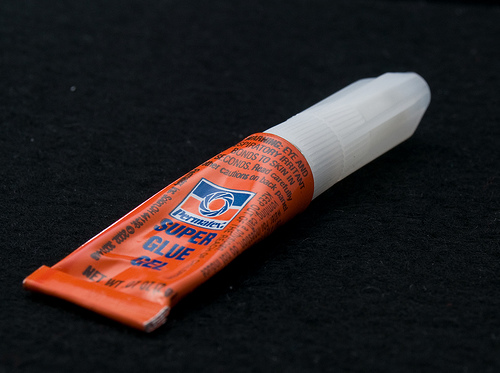Messing around with super glue will result in sticky situation… literally!
- Super glue is a particularly strong adhesive that is made primarily of the chemical compound cyanoacrylate, and technically it is an acrylic resin.
- While ‘super glue’ is a generic term for the product, it is a brand name for the adhesive as well, and the glue is also known as ‘power glue’ and ‘instant glue’, or by other brand names ‘Krazy Glue’ and ‘Eastman 910’.
- Super glue bonds with surfaces due to a reaction with water, which causes strong bonds to be formed with most surfaces touching the glue.
- Urban legend tells of super glue’s origins being accidental and purposed for the military to seal wounds during a war, however this is mostly untrue, though the glue was used during the Vietnam war for this purpose.
- Super glue was first discovered in 1942 by American scientist Harry Coover and his co-workers, in an attempt to create a particularly clear plastic for firearm scopes, however the product was disregarded.
Super Glue
Image courtesy of Earl/Flickr
- Due to air moisture, super glue’s life is shortened significantly, to a month after opening, compared to a year when unopened, however the life of the adhesive is said to be able to be extended by placing the product in the freezer.
- In 1951, the super glue mixture discovered years prior, was rediscovered by Harry Coover along with Fred Joyner during a different scientific experiment, and together they noticed the commercial opportunity; and in 1958, the product became available for purchase under the name ‘Eastman 910’.
- Super glue can generate large amounts of heat when applied to natural textiles, even causing combustion in materials such as wool and cotton.
- Super glue is often used for hobby crafts or models, or to fix broken objects, and a variation of the product is used medically to seal wounds, and in forensics, to make fingerprints visible.
- Super glue can be suitably removed from many surfaces using acetone, a chemical found prominently in nail polish remover, while the adhesive is naturally shed from skin surfaces in around four days.





